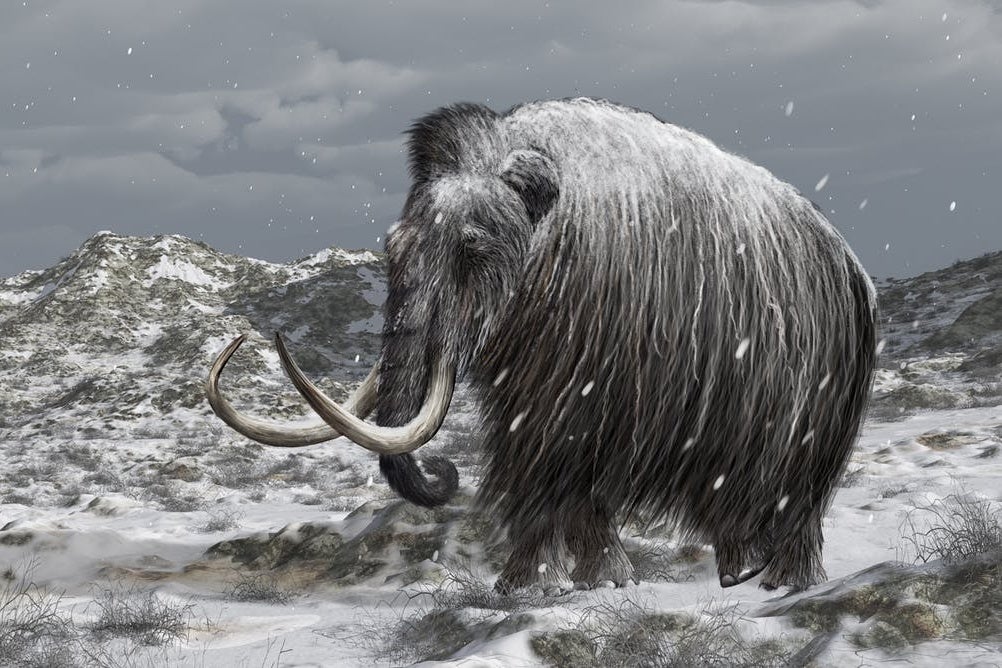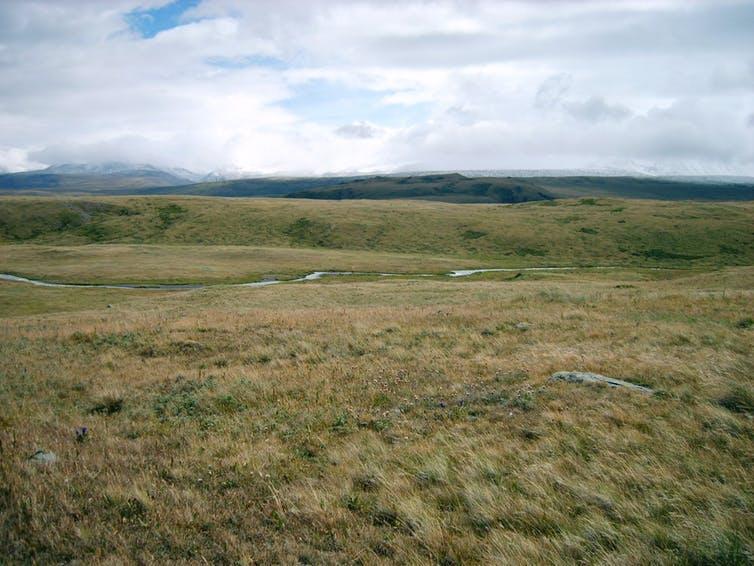Could resurrecting mammoths help stop Arctic emissions?
A 20-year-old experiment is testing whether filling the Arctic tundra with animals could keep carbon trapped in the ground

Your support helps us to tell the story
From reproductive rights to climate change to Big Tech, The Independent is on the ground when the story is developing. Whether it's investigating the financials of Elon Musk's pro-Trump PAC or producing our latest documentary, 'The A Word', which shines a light on the American women fighting for reproductive rights, we know how important it is to parse out the facts from the messaging.
At such a critical moment in US history, we need reporters on the ground. Your donation allows us to keep sending journalists to speak to both sides of the story.
The Independent is trusted by Americans across the entire political spectrum. And unlike many other quality news outlets, we choose not to lock Americans out of our reporting and analysis with paywalls. We believe quality journalism should be available to everyone, paid for by those who can afford it.
Your support makes all the difference.If you managed to time travel back to Ice-Age Europe, you might be forgiven for thinking you had instead crash landed in some desolate part of the African savannah. But the chilly temperatures and the presence of six-ton shaggy beasts with extremely long tusks would confirm you really were in the Pleistocene epoch, otherwise known as the Ice Age. You’d be visiting the mammoth steppe, an environment that stretched from Spain across Eurasia and the Bering Strait to Canada. It was covered in grass, largely devoid of trees and populated by bison, reindeer, tigers and the eponymous “woolly” mammoth.
Unfortunately, both mammoth and most of the mammoth steppe ecosystem today have long but disappeared. But a group of geneticists from Harvard are hoping to change this by cloning living elephant cells that contain a small component of synthesised mammoth DNA. They claim that reintroducing such mammoth-like creatures to Arctic tundra environments could help stop the release of greenhouse gases from the ground and reduce future emissions as temperatures rise due to climate change. While this might sound like a far-fetched idea, scientists have actually been experimenting with something similar for over 20 years.
Arctic lands are covered by areas of ground known as permafrost that have been frozen since the Pleistocene. Permafrost contains vast amounts of carbon from dead plant life that is locked away by the extremely cold temperatures. The amount of carbon in these frozen stores is estimated to be about twice as much as that currently in the atmosphere. If it thaws out, microbes will break down soil organic material to release carbon dioxide and methane into the atmosphere.
As a result, permafrost and the associated carbon pools have been likened to “sleeping giants” in our climate system. If they wake up, the resulting greenhouse gas emissions would raise global temperatures even further than currently projected, causing even greater global climate change (a process known as positive feedback).
Natural geo-engineers
This is where our shaggy friends may come in. Mammoths and other large herbivores of the Pleistocene continually trampled mosses and shrubs, uprooting trees and disturbing the landscape. In this way, they inadvertently acted as natural geo-engineers, maintaining highly productive steppe landscapes full of grasses, herbs and no trees.
Bringing mammoth-like creatures back to the tundra could, in theory, help recreate the steppe ecosystem more widely. Because grass absorbs less sunlight than trees, this would cause the ground to absorb less heat and in turn keep the carbon pools and their greenhouse gases on ice for longer. Large numbers of the animals would also trample snow cover, stopping it from acting like insulation for the ground and allowing the permafrost to feel the effects of the bitter Arctic winters. Again, this would, in theory, keep the ground colder for longer.
This form of mammoth de-extinction and reintroduction could therefore promote grasslands and simultaneously slow the thawing of these frozen soils. So surely it’s worth it?

Pleistocene Park is an epic experiment in the Siberian Arctic that has been underway since 1996 and focused on investigating these processes. It is this park to which the Harvard team hope to deliver the first resurrected mammoth hybrid within the next decade.
Founded by Russian geophysicist Sergei Zimov, the 16 square-kilometre park is filled with around 100 animals roaming free including bison, musk ox, moose, yaks, horses and reindeer. The park is designed to determine if the animals can disturb and fertilise the current ecosystem where little grows into highly productive pastures, as well as slowing or even reversing permafrost thaw.
I’ve been privileged to have visited the park a number of times, and have been amazed at the effort required to undertake such “big science” in this wilderness. We travelled for many hours along the massive Kolyma River to collect reindeer from the Arctic coast, and transported them by small boats to the park – no mean feat in these regions. Adding just another few animals to the experiment was exhausting. But it was totally exhilarating and made me question whether this was such a crazy idea after all.
The limited financial and personnel available to the park has made building and monitoring the project’s success difficult. Early evidence with extant species such as musk ox, reindeer and horse suggests animal presence is changing the park landscape structure and cooling the ground.
Recently, the park’s grasslands have been shown to reflect more sunlight than the surrounding larch forest, which will reduce the heat penetrating the ground. Scientists have also taken 300 metre-long ground samples from across the landscape to measure the carbon storage in the park, and work out if it differs from that of the surrounding, non-disturbed landscape.
Is it worth it?
Much of the work relies on public crowdfunding and the park is now seeking money to fill the park with temperature sensors and light sensors. It has already installed a 35-metre high flux tower that continually monitors methane, carbon dioxide and temperature in the park’s atmosphere. Collecting convincing evidence to back up the theory clearly takes time and huge effort, but we should know soon if this bold plan could make a realistic solution to climate change.
Some scientists and conservationists have questioned whether resurrecting the mammoth is really worth it, comparing the high costs with the relative lack of funding for saving the world’s elephants. A key question is whether we need mammoth specifically to make these projects work? Could we not simply knock down trees manually, and then use existing animals? I guess this may depend on whether we decide to expand such an approach across far greater swathes of the Arctic, where human intervention will be costly or even near impossible in places.
Yet tackling global climate change needs ambitious, novel and often epic solutions, both to reduce emissions and to minimise the chance positive feedback from the Arctic that may cause untold damage to our climate system. I don’t know if bringing the mammoth back is the right approach, but at the moment we lack a decent solution for keeping the giant Arctic carbon deposits in the ground.
Paul Mann is a senior lecturer in geography and environmental sciences at Northumbria University, Newcastle. This article was first published in The Conversation (theconversation.com)
Join our commenting forum
Join thought-provoking conversations, follow other Independent readers and see their replies
Comments